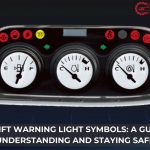We’ve all been there, driving along when suddenly we hit a pothole or curb harder than we intended. Afterwards, we’re left staring at our tire’s sidewall, wondering if that scuff or bulge spells the end of the road for our trusty tire. It’s a common dilemma for drivers: figuring out how much sidewall damage is too much.
In the world of tires, the sidewall isn’t just there for looks; it plays a crucial role in the performance and safety of your vehicle. Understanding the signs of serious damage can save us from headaches down the road—literally. So, let’s dive into what makes sidewall damage worrisome and how to tell when it’s time to say goodbye to your tire. Join us as we explore the ins and outs of tire health, ensuring we all make informed decisions about when to repair and when to replace.
Understanding Sidewall Tire Damage
Knowing what constitutes serious sidewall tire damage helps drivers decide the appropriate action to take, whether it’s heading to a repair shop or purchasing a new tire. Our guide delves into the types of sidewall damage and how to identify each.
Types of Sidewall Damage
- Cuts and Gashes: Sharp objects on the road can slice the tire’s sidewall, potentially exposing the internal cords. Such damage compromises the structural integrity of the tire, increasing the risk of a blowout.
- Scrapes and Abrasions: Rubbing against curbs or hitting a pothole might not puncture the tire, but it can weaken the sidewall by removing layers of rubber, making it more susceptible to future failures.
- Bulges and Blisters: These indicate that the tire’s internal structure has been damaged, allowing air pressure to push the rubber outward. Bulges and blisters are imminent signs that a tire needs to be replaced to avoid a blowout.
Knowing how to recognize these signs will ensure that drivers maintain their vehicle’s performance and safety.
Identifying Serious Damage
To assess sidewall damage, looking for these signs is crucial:
- Visibility of Internal Components: If cuts or gashes reveal the tire’s cords or steel belts, it’s a clear indication the tire is compromised and unsafe for driving.
- Size and Depth of Damage: Small abrasions may not require immediate action, but any cut deeper than 1/16th of an inch calls for a professional evaluation.
- Location of Damage: Damage located on the sidewall is generally more concerning than damage on the tread, due to the sidewall’s critical role in supporting the vehicle’s weight and providing structural integrity.
By understanding sidewall tire damage, drivers can make informed decisions about repairing or replacing their tires, thus maintaining the safety and performance of their vehicle.
Assessing the Severity of Sidewall Damage
When evaluating sidewall tire damage, our main goal is to determine whether the tire needs immediate replacement or if minor repairs might suffice. Our focus on the sidewall stems from its critical role in ensuring our vehicle’s safety and performance. To accurately assess the severity, we consider several key factors.
First, we look at visible cords or steel belts. If these internal components are showing through the sidewall, it indicates severe damage that compromises the tire’s integrity and safety. Such damage typically requires immediate tire replacement, as the risk of tire failure is significantly elevated.
The size and depth of the damage provide additional clues. Minor abrasions or scrapes may not necessitate immediate action; however, deep cuts or punctures penetrating the sidewall depth pose a serious safety concern. These damages can weaken the tire structure, potentially leading to blowouts while driving.
We also pay keen attention to bulges and blisters. These raised areas on the sidewall suggest internal damage, such as the separation of the tire’s layers or loss of rigidity in the internal frame. Bulges and blisters often result from hitting potholes or curbs and, unfortunately, signal that replacement is the safest option.
Lastly, the location of the damage significantly influences our assessment. Damage located on the sidewall’s outer edges is particularly concerning. These areas bear a lot of strain during turns and are more susceptible to failure if weakened. Contrarily, minor damages positioned away from the edges might not pose immediate safety risks but still warrant professional evaluation.
By considering these factors, we can make informed decisions about the safety and viability of continuing to use a tire with sidewall damage. Ultimately, if there’s any doubt or concern about a tire’s condition, consulting a professional is the best course of action to ensure our vehicle’s safety on the road.
Implications of Ignoring Sidewall Damage
Understanding the consequences of overlooking sidewall damage is essential, as it directly impacts our safety and that of others on the road. Ignoring such damage can lead to several undesirable outcomes.
Reduced Tire Lifespan
Minor cuts or scrapes might not seem like immediate concerns, but they can rapidly deteriorate into more significant issues. The tire’s structural integrity is compromised, leading to a shorter lifespan than a tire maintained in good condition.
Potential for Blowouts
One of the most dire consequences is the increased risk of tire blowouts. Sidewall damage weakens the tire’s structure, making it more susceptible to failure under normal driving conditions, such as high speeds on highways or under heavy loads.
Loss of Vehicle Control
A blowout or sudden tire failure dramatically reduces our ability to control the vehicle. This can lead to swerving, an inability to steer effectively, or even a complete loss of control, posing safety risks to ourselves and other road users.
Decreased Fuel Efficiency
Damaged tires can affect the vehicle’s aerodynamics and rolling resistance, leading to decreased fuel efficiency. We might find ourselves visiting the gas station more often, increasing our driving expenses.
Compromised Performance in Adverse Conditions
Finally, tires with sidewall damage perform poorly in adverse weather conditions. Their compromised structure can lead to inadequate water dispersion on wet roads or insufficient grip during snow and ice conditions, increasing the risk of accidents.
Ignoring sidewall damage might seem inconsequential at first, but the implications highlight the importance of addressing even minor damages promptly. Consulting a professional for an evaluation ensures we maintain our vehicle’s safety, performance, and efficiency, ultimately safeguarding our well-being and that of others on the road.
Repair Vs. Replacement
When considering how much sidewall tire damage is too much, one must carefully weigh the options between repair and replacement. Understanding when a tire can be safely repaired and when it needs to be replaced is crucial for maintaining road safety.
Repairing a tire with minor sidewall damage is sometimes possible, especially if the damage is superficial, such as light scrapes or minor cuts that don’t expose the internal structure. These repairs must adhere to industry standards, typically involving patching the damaged area from the inside to restore integrity without compromising safety. However, it’s important to note that any repair attempt on the sidewall is rare and usually not recommended by tire manufacturers due to the critical role the sidewall plays in tire performance.
On the other hand, replacement becomes mandatory when sidewall damage is severe. Conditions warranting immediate tire replacement include visible cords or steel belts, deep cuts, punctures, or any damage showing signs of bulges or blisters. These symptoms indicate that the tire’s structural integrity is compromised. Continuing to use a damaged tire, particularly with significant sidewall issues, can lead to catastrophic failure, including blowouts at high speeds.
Given the sidewall’s vulnerability and the difficulty in safely repairing damage in this area, opting for replacement is often the safest choice. Minor damages might not seem problematic at first glance, but they can rapidly deteriorate under the stress of regular driving conditions. Even when considering the cost, replacing a damaged tire is invariably less expensive than the potential consequences of a tire failure while driving.
In light of these considerations, consulting with a tire professional is the best course of action. Specialists can assess the severity of the damage and recommend the safest option, ensuring the well-being of all road users. We always advocate erring on the side of caution, prioritizing safety over cost when it comes to tire damage, especially when the damage involves the sidewall.
Preventing Sidewall Tire Damage
Preventing sidewall tire damage begins with understanding its common causes and adopting measures to mitigate them. Regular maintenance and cautious driving play crucial roles in minimizing the risk of damage. Here, we delve into practical steps to protect your tires’ sidewalls, ensuring they remain in good condition for as long as possible.
- Routine Inspections: Carry out regular checks on your tires for any signs of wear, cuts, bulges, or other irregularities. Early detection can prevent further damage.
- Proper Inflation: Ensure your tires are always inflated to the manufacturer’s recommended levels. Underinflated tires can cause excessive flexing of the sidewalls, leading to damage, while overinflation can make them more susceptible to impact damage.
- Avoiding Road Hazards: Steer clear of potholes, debris, and sharp objects on the road. If unavoidable, approach with caution and cross at a slow, steady speed to minimize impact.
- Mindful Parking: Be cautious when parking near curbs to avoid scraping the tire sidewalls. Even slight rubs can weaken the structure over time.
- Load Limits: Adhere to your vehicle’s recommended load capacity to prevent excessive strain on the tires. Overloading can lead to sidewall failures.
- Seasonal Adjustments: For those in climates with severe winter conditions, consider investing in winter tires. They are designed to withstand cold temperatures and provide better traction, reducing the risk of sidewall damage from slippage.
- Professional Alignment and Balancing: Regularly have your vehicle’s alignment and balance checked and corrected if necessary. Improper alignment can cause uneven wear, putting additional stress on the sidewalls.
By integrating these preventative measures into your routine, you can significantly reduce the likelihood of sidewall tire damage. Not only does this enhance your safety on the road, but it also contributes to the longevity of your tires, offering better performance and fuel efficiency. Always remember, maintaining your tires in top condition is a proactive approach to safeguarding yourself and others while driving.
Conclusion
We’ve walked through the steps to identify and assess sidewall tire damage and the importance of not overlooking it. It’s clear that being proactive about tire maintenance isn’t just about extending the life of our tires—it’s crucial for our safety and overall driving experience. Let’s make a commitment to routinely check our tires, stay mindful of how we drive, and take preventive actions to safeguard against damage. By doing so we’re not just protecting our tires but also ensuring a smoother and safer journey every time we hit the road. Remember it’s always better to be safe than sorry especially when it comes to tire health. Safe travels!
Related Posts:














